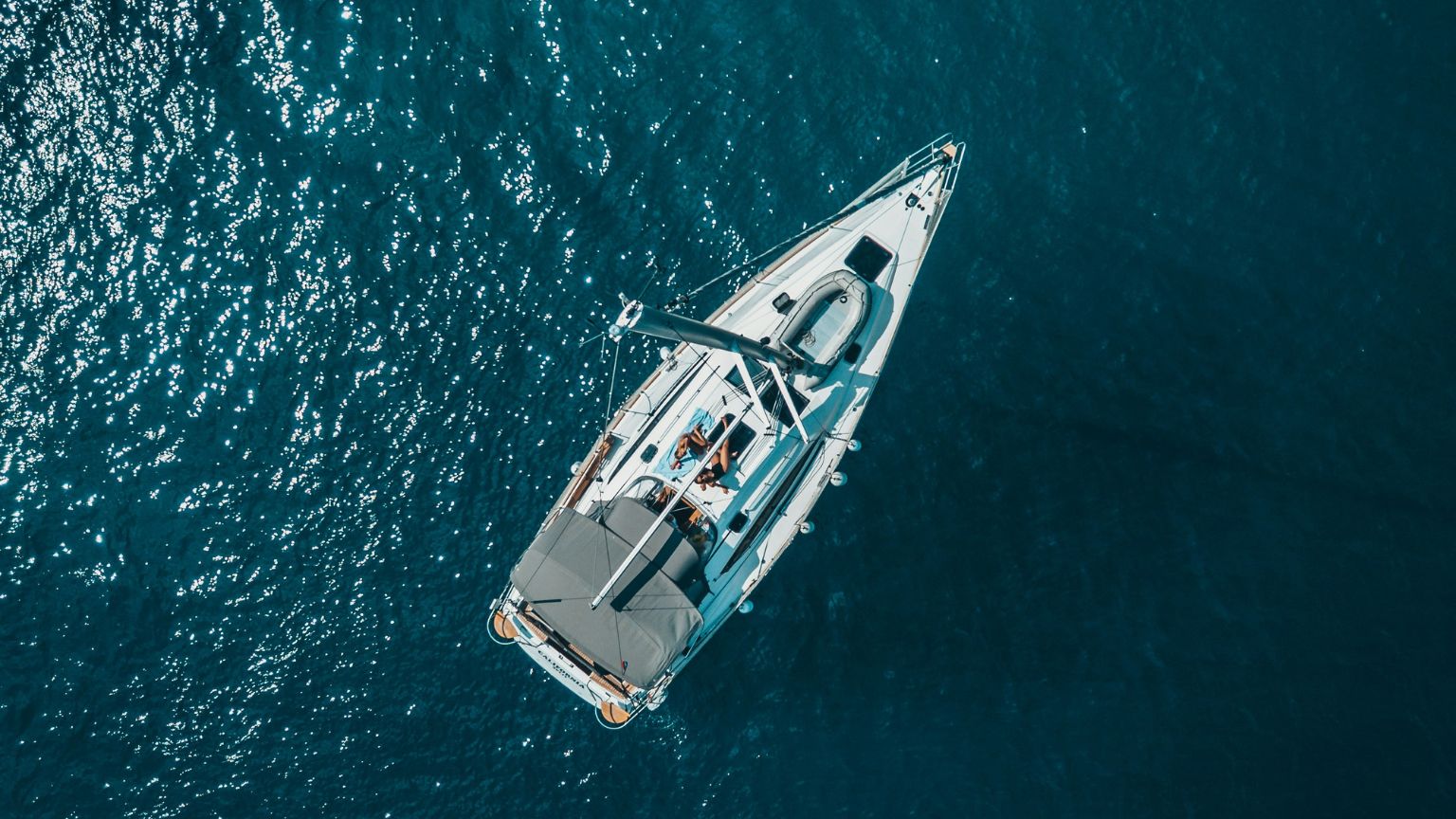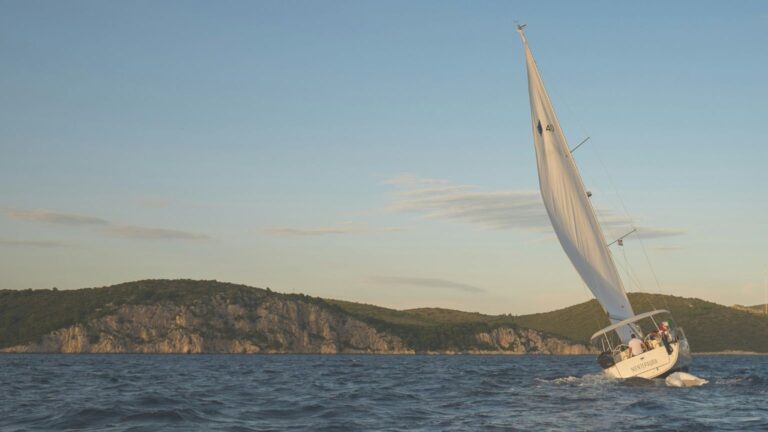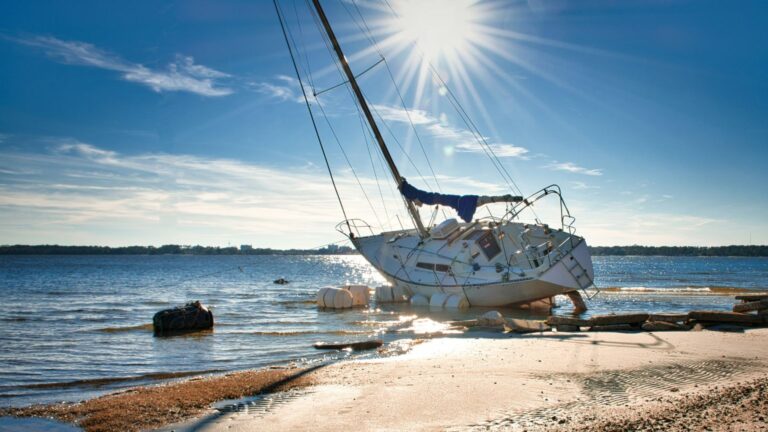2025, the sailing yacht industry is navigating a steady and purposeful course. Unlike the post-pandemic volatility seen in many luxury segments, the market for sailboats—ranging from nimble day cruisers to transoceanic bluewater yachts—is defined less by boom or bust and more by measured growth, evolving tastes, and environmental awareness.
While power yachts and superyachts often dominate headlines with sheer size and spectacle, sailing yachts are quietly experiencing a renaissance driven by eco-conscious design, charter-to-ownership pipelines, and the enduring romance of wind-powered travel.
This article explores the state of the global sailing yacht market in 2025, analyzing demand trends, production capacity, pricing shifts, and regional strengths. With attention to both new builds and the resilient pre-owned market, it aims to answer a key question: is the sailing yacht industry in crisis—or simply evolving for a new generation of sailors?
Here’s a richly detailed, descriptive article focusing exclusively on the sailing yacht market in 2025, complete with demand, supply, regional dynamics, and full source links at the end.
Poniżej znajduje się pełna, poprawiona wersja artykułu w języku angielskim – skupiona na rynku jachtów żaglowych w 2025 roku. Usunięto ikonki, skróty oraz odnośniki w treści, dodano wprowadzenia do każdej sekcji oraz pełne przypisy na końcu tekstu.
Our article offers an in-depth look at the 2025 sailing yacht market: its size, drivers of demand, supply chain health, and how different regions are responding to new challenges and opportunities.
Market Size and Global Growth Trends
The sailboat industry in 2025 remains a relatively small but steadily expanding segment within the wider maritime market. While overshadowed in total revenue by the motor yacht sector, sailing yachts continue to grow due to their lower operational costs, simpler maintenance profiles, and strong appeal among seasoned mariners and new enthusiasts alike.
According to recent data, the global sailboat market is valued at approximately 6.5 billion USD in 2025. This represents a slight increase from 2024, continuing a multi-year trend of consistent, if modest, expansion. Long-term forecasts are optimistic, with market projections estimating growth to approximately 7.7 billion USD by 2032. Annual growth rates vary depending on the segment and region, but global compound annual growth rates (CAGRs) between 2.5% and 4.3% are common across studies.
This steady trajectory is supported by increasing consumer interest in sustainable leisure activities, the growing popularity of marine tourism, and advancements in materials and design.
- The global sailboat market is projected to grow from $6.35 billion in 2024 to $6.50 billion in 2025, reflecting a gentle but steady CAGR of ~2.4%.
- Looking ahead, by 2029 it’s forecast to reach $7.68 billion (4.3% CAGR), and by 2032, around $7.72 billion (2.85% CAGR through 2032).
Who Is Buying Sailing Yachts in 2025?
The demand for sailing yachts in 2025 is not defined by one single demographic, but rather by a diverse set of buyers with a shared appreciation for the slower, more intentional experience that sailing offers. Three primary trends are shaping demand:
Leisure and Lifestyle Motivations
The experience of sailing itself remains a major draw. Unlike motor yachts, which are often associated with luxury entertainment or passive cruising, sailing yachts offer a more engaged and immersive lifestyle. Buyers today are not just looking for status—they are seeking authenticity, adventure, and a connection with the natural world.
This is especially evident in the growing number of long-distance cruisers and families who are embracing full-time or seasonal life aboard. The desire for self-sufficiency and off-grid capability is fueling interest in sailboats with ocean-crossing potential.
Charter-to-Ownership Pipeline
The charter market continues to serve as a powerful entry point for new buyers. Sailing yachts, particularly catamarans and monohulls under 40 meters, are increasingly available through luxury charter companies. For many users, a positive charter experience leads directly to ownership.
This model lowers the psychological and financial barriers to entry and has proven especially popular among younger buyers who may not have grown up sailing but are drawn to the lifestyle after trying it on a charter holiday.
Sustainability and Innovation
Environmental awareness is shaping consumer choices in nearly every industry—and yachting is no exception. While all marine vessels face scrutiny for their environmental footprint, sailing yachts naturally appeal to eco-conscious buyers due to their wind propulsion and lower fuel use.
In 2025, many new sailing yachts include solar panels, energy storage systems, and lightweight materials such as carbon composites or sustainably sourced timber. Some builders are even experimenting with fully autonomous sail rigs and electric auxiliary propulsion, reducing or eliminating diesel engines altogether.
Final Assessment: Evolving, Not Declining
The sailing yacht market in 2025 is not undergoing a crisis. Rather, it’s undergoing a steady and positive evolution:
- Demand growth remains intact—fueled by leisure, adventure, sustainability, and charter-to-ownership models.
- Supply constraints are easing, but elevated costs and material availability keep prices firm.
- Pre-owned and classic yachts provide attractive options for cautious buyers.
- Regional resilience is evident: North America leads volume; Europe innovates; Asia-Pacific is quickly emerging.
This market is healthy, balancing intentioned growth with thoughtful investment in innovation and eco-friendly trends.
Supply Conditions and Market Response
On the supply side, the sailing yacht industry in 2025 is in a period of cautious recovery and strategic adaptation. The COVID-19 pandemic created lasting disruptions in global supply chains, affecting everything from teak and sailcloth to marine electronics and labor availability. Though many of these issues are now resolving, their impact is still felt in delivery timelines and pricing.
European builders—especially those in the UK, France, and Poland—are working to stabilize production. Iconic shipyards like Spirit Yachts and Oyster Yachts report renewed interest and expanding order books, particularly among buyers seeking long-range bluewater cruisers. Smaller custom builders, focusing on aesthetics and craftsmanship, are seeing a resurgence of orders for classic-style yachts made from natural materials.
Sunreef Yachts, a Polish company known for its luxury sailing catamarans, has expanded its production facilities into the Middle East to meet growing demand from Gulf clients and reduce delivery delays.
However, pricing remains elevated. Material costs and skilled labor shortages continue to challenge boatbuilders, particularly in the semi-custom and bespoke yacht segments. Entry-level prices for popular production sailboats have risen substantially—up to 250% since the early 2010s, far outpacing inflation. This has pushed many middle-income buyers toward the pre-owned market, where prices are still relatively reasonable.
Demand and Supply Balance: Is There a Crisis?
Although elevated prices and shifting buyer behaviors have created friction in the market, there is no indication of a true crisis in the sailing yacht sector. Instead, the current landscape reflects a rebalancing of demand and supply after years of instability and pent-up consumption.
New boat production remains slightly below peak levels, but buyer interest is strong enough to maintain healthy order books. In fact, many brokers report that the current environment favors quality over quantity. Buyers are more informed, more deliberate, and more selective than during the frenetic post-pandemic buying spree.
The pre-owned market also remains strong, particularly for well-maintained bluewater cruisers and charter-proven catamarans. Listings are turning over steadily, though not at the feverish pace of 2021–2022. Sellers with high-quality vessels can still command good prices, and buyers are often looking for turnkey solutions with minimal refit needs.
How U.S. Tariffs Are Reshaping the Landscape
Recent research on U.S. import duties—ranging from 30% to 70% on Chinese components—reveals that the real cost increase often exceeds the stated tariff rate, due to cumulative mark‑ups, financing costs, and insurance hikes. The result is a significant squeeze on pricing for mid-tier cruising sailboats, affecting boats under $1–2 million.
Suppliers of hulls, electronics, sails, rigging, and batteries—often sourced globally—pass these higher costs on to buyers, dampening both demand and profitability. For mid-budget yachts, this can nullify the affordability that initially attracted buyers and compromise trip planning or equipment options .
Ripple Effects Through the Supply Chain
These tariffs permeate every level of the sailing ecosystem:
- U.S. assembler yards face higher import costs for components.
- Brokers and builders struggle to close deals as buyers rethink or delay orders.
- Insurance and financing terms grow stricter as asset values and replacement costs rise.
- Buyers lose confidence—mid-income boaters are particularly vulnerable to—even slight cost escalations—especially in discretionary segments.
Ultimately, the mid-tier sailing yacht market—long defined by attainable luxury and self-contained cruising—is under pressure from widening cost gaps.
Historical Echoes: Repeating a 1990s Mistake
Analysts draw parallels between current tariffs and the U.S. “luxury tax” of 1991, which triggered a 77% collapse in boat sales after being imposed on vessels over $100,000. The lesson was stark: fiscal penalties prompt buyers to delay or forego purchases, devastate domestic production, and prolong recovery in demand.
Regional Performance and Trends
Different regions are responding to the new reality of the sailing yacht market in distinct ways:
Europe
Europe remains the global hub for sailing yacht design and production. French builders like Beneteau and Dufour continue to dominate in volume, while British yards such as Spirit Yachts, Pendennis, and Oyster focus on high-end and ocean-capable vessels. Northern Europe also remains strong in the refit and restoration of classic wooden yachts.
Sustainability trends are more pronounced in Europe than elsewhere, with both regulation and consumer pressure driving innovation in propulsion and materials.
North America
The United States remains a key market for both new and used sailboats, with steady interest from coastal regions such as Florida, the Pacific Northwest, and New England. However, rising tariffs and stricter import rules for foreign-built yachts have nudged some buyers to consider U.S.-made models or turn to the brokerage market for duty-paid inventory.
Asia-Pacific and Middle East
These regions are emerging quickly as growth markets for sailing yachts. Rising personal wealth, growing interest in marine tourism, and the development of new marinas and yachting infrastructure in countries like Thailand, the UAE, and China are creating demand for both private yachts and charter fleets. Builders like Sunreef are actively expanding in these markets.
Conclusion
The sailing yacht market in 2025 is far from being in crisis. While it faces undeniable challenges—rising costs, evolving buyer expectations, and supply chain recalibrations—it also enjoys strong fundamentals and a growing sense of purpose. As global interest in sustainable, slow travel increases, sailboats stand as a timeless and increasingly relevant option for those seeking freedom, exploration, and self-reliance on the water.
For manufacturers, the key lies in balancing innovation with craftsmanship, and for buyers, in aligning expectations with real-world conditions. Ultimately, the industry is not sinking—it is adjusting its sails for the winds of a new era.
The global sailing yacht market in 2025 is entering a new phase—not one of turbulence, but of transformation. While the broader yachting sector continues to recover from post-pandemic disruptions and adjust to inflationary pressures, sailing yachts are carving out their own path. Driven by lifestyle shifts, increased environmental awareness, and the enduring appeal of wind-powered adventure, the segment shows signs of measured growth and innovation. From handcrafted classics to smart hybrid cruisers, the world of sailboats is evolving for a new generation of owners, charter clients, and marine explorers.
Sources:
- https://www.thebusinessresearchcompany.com/report/sailboat-global-market-report
- https://blog.tbrc.info/2025/04/sailboat-market-size-2/
- https://www.maximizemarketresearch.com/market-report/sailboat-market/126982/
- https://www.yatco.com/global-yacht-market-forecast-2025/
- https://www.yachtingworld.com/yachts-and-gear/finding-a-great-yacht-deal-in-2025-expert-advice-on-understanding-the-market-157505
- https://www.thetimes.co.uk/article/have-britains-yacht-makers-made-it-out-of-choppy-waters-m76df32sg




